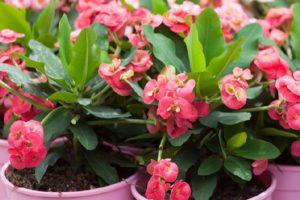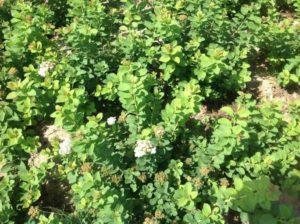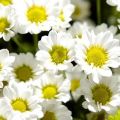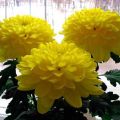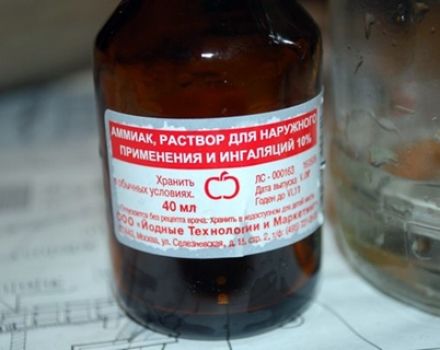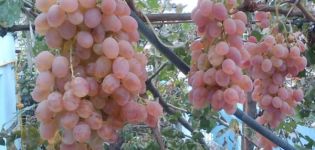Description and characteristics of maiden chrysanthemum, 8 best varieties and their cultivation
Garden chrysanthemum is a Compositae plant of the Astrov family. It has a long flowering period and excellent decorative qualities. Several species are known, some of which have been growing for several years, and some of which belong to annual crops. It is often possible to see chrysanthemum (pyrethrum) maiden on the plots. This unpretentious perennial fell in love with flower growers, because it looks great both in a flower bed and in a bouquet. In addition, the flower has medicinal properties.
Description and features
The motherland of maiden chrysanthemum is North China. The plant has several varieties. Flowering begins in June and continues until the first frost. During this period, the plant is a highly branched bush with a height of 20 to 80 centimeters, covered with many small white inflorescences up to 3 centimeters in diameter. Depending on the variety, the flowers are in the form of double or semi-double balls, resemble snowflakes, snow flakes, or are collected in voluminous inflorescences. The plant has a pleasant bitter aroma.
In folk medicine, infusions of chrysanthemum maiden are used as an analgesic, anti-inflammatory and antipyretic agent.
Popular varieties
There are many varieties of chrysanthemum maiden, each of which differs in its own shade of inflorescences, stem height, crown shape.
Schneebal
Schneebal is a low-growing variety, reaching a height of no more than 20 centimeters. It has double flowers of white or yellowish shades and a green core. The crown of the bush has a spherical shape with a diameter of up to 25 centimeters.
Virgo
A tall plant with a stem reaching 80 centimeters. It has small white double flowers, up to 1.5 centimeters in diameter.

Zilbeoteppich
This variety has small, double white inflorescences.
Snow ball
A small-flowered plant, its inflorescences have a rounded shape, the snow-white core is surrounded by a kind of skirt of short petals. Differs in lush flowering. The name of the variety justifies the shape of the crown, reminiscent of large snow balls.
Double White
A bushy plant with small white flowers that resemble buttons. The stem height is no more than 25 centimeters.
Goldbal
Small globular bushes with double flowers, 2.5 centimeters in diameter.The height of the bush is small - only 35 centimeters.
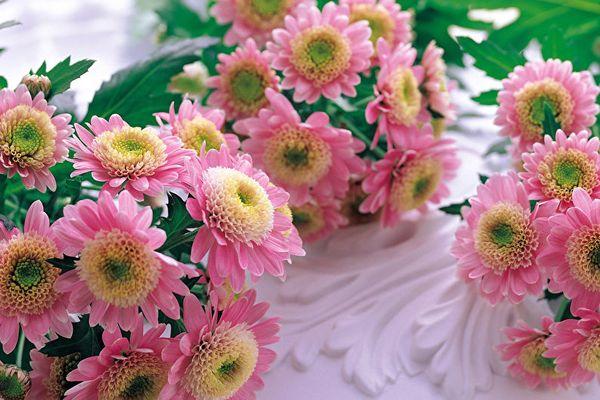
Golden ball
A short plant with spherical double inflorescences of a white or yellowish hue. Each flower is decorated with a lace skirt.
White stars
A fast-growing plant with branched bushes up to 25 centimeters high. Has double flowers. The apical inflorescences form a beautiful lush crown.
Growing through seedlings
Chrysanthemum maiden is a perennial plant, but is often used as an annual crop. It is much easier to grow an annual, although it blooms later. The overwintered perennial plant with last year's dry shoots does not look very aesthetically pleasing. The annual boasts fresh green stems and a lush, snow-white crown.
Tank and soil preparation
Seedlings are grown in boxes specially prepared for this purpose. The soil is bought at a flower shop or made on its own. For this, garden soil, peat and humus are mixed in equal parts. The containers are filled with this mixture, having previously laid a drainage layer in the form of pebbles or expanded clay on the bottom.

Temperature regime
Germination should take place indoors at 23-25 degrees Celsius. After the first shoots appear, the boxes are placed in a cooler place and grown at a temperature of 15 to 18 degrees Celsius. This is necessary in order to prevent strong pulling of the shoots.
How to plant
Sow seeds for growing seedlings in late March or early April. Having prepared the containers, the seed is buried into the soil at a distance of 1 centimeter, after moistening it. Then the plantings are covered with film, glass or put in a plastic bag in order to create greenhouse conditions.
The soil should always be moist. But it is recommended to soak it not by watering, but by spraying, so that the seeds do not go deep. For good germination you need:
- regular ventilation of the room;
- good lighting of plants.
Picking
Approximately 2 weeks after the seedlings germinate, with the appearance of 4 developed leaves, a pick is carried out - seating in separate pots. Before starting the procedure, the soil is abundantly moistened. After the end, the sprouts are sprayed with a growth stimulator (Epin or Zircon). This will shorten the plant survival time.
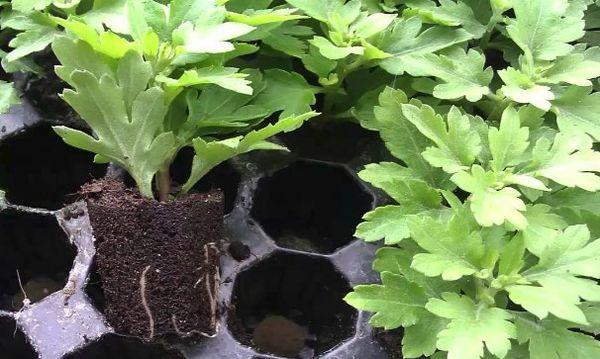
Hardening
10-14 days before transplanting seedlings into open ground, hardening is carried out, exposing the pots to fresh air.
Landing in open ground
Before planting in open ground, thorough preparation is carried out. Choosing a place for planting, improving the quality of the soil.
Seat selection
The maiden chrysanthemum is photophilous, so a place on a dais, illuminated by the sun for most of the day, is chosen for it. At the same time, the plant should be on the leeward side. Frequent winds negatively affect the decorative qualities of plants.
Soil requirements
Chrysanthemum feels comfortable in limed, well-warmed by the sun soil. Air must be supplied to the roots in sufficient quantity, therefore, a drainage system must be considered. In addition, the soil will need to be loosened periodically. The soil is prepared in the fall: they dig it up, fertilize it, lime it.

Timing
Planting plants in open ground can be done only when there is confidence that frosts will not return. In Central Russia, it is about mid-May.
Landing scheme
Having determined the landing site, make holes at a distance of 23-25 centimeters from each other. The wells are spilled with an aqueous solution of the root formation stimulator Kornevin (3 grams of the product per 3 liters of water). Plants must be taken together with a lump of earth and buried in the ground together with cotyledon leaves (1.5-2 centimeters below ground level).
With this method, a lush, beautiful bush will form.
Care rules
The plant does not require complex care.In addition to the usual measures for watering, loosening the soil, weeding, it needs to remove the faded inflorescences. This will help maintain a beautiful spherical crown shape.
Watering
Watering should not be too frequent, as the chrysanthemum does not tolerate waterlogged soil. The frequency of watering is increased only in case of hot summer and in the absence of precipitation. Chrysanthemum maiden also requires more moisture during the period of active growth and flowering.
Top dressing
Plant feeding is carried out 3 times a season. The first application of fertilizers is carried out three weeks after planting (take a preparation based on ammonia nitrogen). The second feeding is done two weeks before flowering, and the third - in the fall, at the end of the growing season (mineral complex fertilizers are used). Such a scheme will provide a long and friendly flowering.
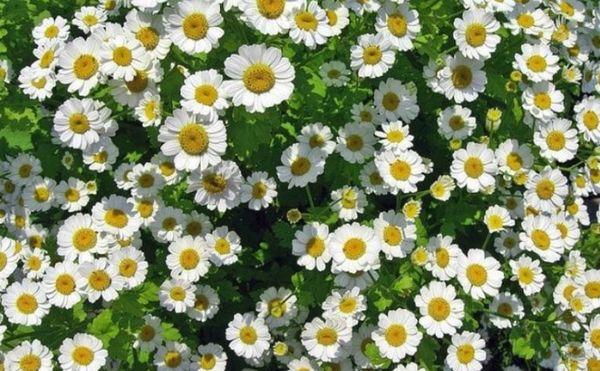
Weeding and loosening
After watering, it is imperative to loosen the moist soil for good air permeability. In parallel with this, weeds and plant debris are removed, on which pathogens and parasites can live. After that, mulching is done - they cover the moistened soil at the roots with a layer of mulch (bark, sawdust, hay).
Preparing for winter
Chrysanthemum maiden refers to crops that winter in the ground. Preparing the plant for winter, immediately after the onset of cold weather, it is pruned, leaving shoots of 14-15 centimeters. The cut bushes are carefully huddled, sprinkled with earth. Then the plants are covered with spruce branches or sawdust.
Reproduction
Plants are propagated by seeds or cuttings.
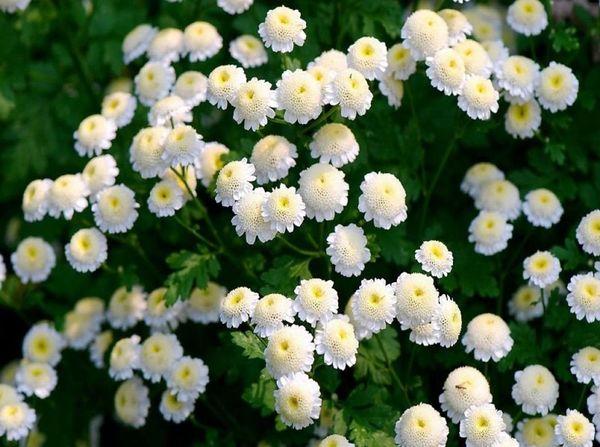
Seeds
The timing of seed placement in the soil varies depending on how it is supposed to be sown in open ground. In March, they are sown in greenhouses for growing seedlings, and in May they are sown directly into open ground.
There are advantages of the open field sowing method:
- adaptation of seedlings to the external environment is much easier;
- the plants do not need to be replanted, which means there is no risk of root damage.
Shallow grooves or holes are made in the soil at a distance of 30-40 centimeters from each other. 3 seeds are placed in one hole at once. They are sprinkled with earth and watered. Before the first shoots, you can cover with foil, creating greenhouse conditions. After strengthening the seedlings, they are thinned out, leaving one sprout in each hole. After another 10 days, the first feeding is done.
Cuttings
Cuttings are another way of propagating perennial plants. Overwintered bushes intended for cuttings are planted in a greenhouse and often watered to make the shoots more powerful. By the end of March, they are cut off, planted in boxes with a nutrient mixture consisting of soil, humus, sand and covered with foil. After rooting (after a month), they are transplanted into open ground.

Diseases and pests
For chrysanthemum maiden, mainly fungal infections that affect plants with waterlogging and poor ventilation are dangerous.
Septoria
One of the most common infections. White spots appear on the leaves, surrounded by a dark border. The causative agents of the disease are fungi of the genus Septoria. The spots grow, causing the leaf to die. At the initial stage, they fight the disease by removing the affected leaves. The neglected form of the disease can be defeated only by treating the plant with fungicides.
Rust
The disease manifests itself on the leaves in the form of pustules of various shapes and sizes. They crack, pouring out fungal spores in the form of a rusty powder. The plant is losing strength. Diseased leaves are removed, bushes are transplanted. If necessary, use fungicidal preparations.
Powdery mildew
Powdery mildew is also a common fungal disease. It appears as white spots on the upper side of the leaf. They gradually increase, covering the entire leaf.
Moisture on the leaves is a risk factor. Make sure that water does not fall on their surface when watering.
Leaf nematoda
Nematodes are phytohelminths, microscopic roundworms. The disease looks like brown spots on the leaves that increase over time. The penetration of helminths into the leaves and roots threatens with imminent death. Prevention will help avoid infection. For its implementation, insecticides are used in the form of sprays.
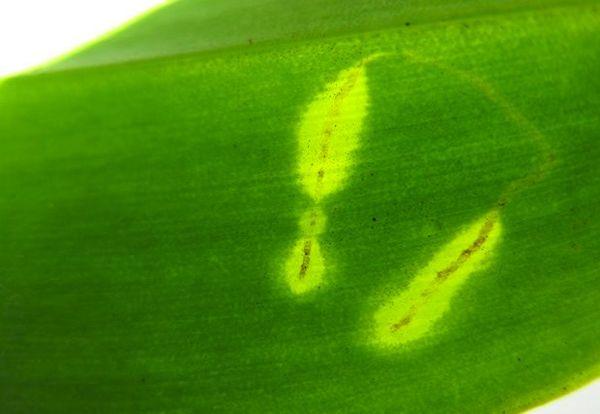
Spider mite
It is an arthropod herbivorous pest ranging in size from 0.2 to 1 millimeter, living on leaves. He feeds on the sap of plants, which makes them sick and die. The tick becomes active in hot weather. Fighting the parasite, remove it when watering with a stream of water. If this does not help, then they are treated with a solution of laundry soap and copper sulfate.
Use in design
Chrysanthemum maiden is actively used both in landscape design and in floristry. Creating garden ensembles, low bushes are planted in the foreground, and high ones are used in prefabricated compositions. White inflorescences can be cut to create lush bouquets. They look no less impressive in composite bouquets. Cut flowers stay fresh for quite some time.
If you regularly change the water and prune the stems, they will stand for at least two weeks.
